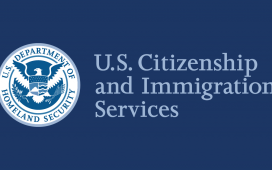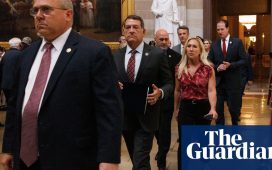WRITTEN TESTIMONY
OF
LEON RODRIGUEZ
DIRECTOR
U.S. CITIZENSHIP AND IMMIGRATION SERVICES
FOR A HEARING ON
“Oversight of the Administration’s Misdirected Immigration Enforcement Policies: Examining the Impact on Public Safety and Honoring the Victims”
BEFORE
THE SENATE COMMITTEE ON JUDICIARY
JULY 21, 2015 10:00AM
226 DIRKSEN SENATE OFFICE BUILDING
WASHINGTON, DC
Chairman Grassley and Ranking Member Leahy and distinguished members of the Committee, I appreciate the opportunity to appear before you today to testify about Deferred Action for Childhood Arrivals (DACA).
Even before joining USCIS, I was keenly aware of the agency’s proud history of administering immigration services with quality and integrity for individuals from all over the world. Like you, I fully understand just how critical it is for USCIS to successfully deliver on its mission in support of the fundamental values of our nation, whether they are economic, humanitarian, or for other national interests. As I approach my one year anniversary as Director of USCIS, I am tremendously proud to lead an organization in which thousands of dedicated public servants administer our complex immigration system fairly, effectively, and professionally while working tirelessly to strengthen and improve our processes each and every day. As a former state and federal prosecutor, I am fully committed to ensuring that our immigration system is protected against individuals who pose a threat to our national security and public safety or seek to defraud the system.
It is truly an honor and a privilege to work alongside the men and women of USCIS. As the son, grandson and great-grandson of immigrants who came to the United States fleeing persecution and hoping for a better future, I know firsthand that our nation’s immigration laws and policies can change lives, provide opportunities to future generations, and contribute to our economic growth and well-being. As I have regularly said, every USCIS file contains the story of one family’s hopes, dreams, and all too often, suffering.
I was drawn to the USCIS mission not only because of my family’s experience, but also because I am a patriot devoted to our country’s values of freedom, equality, hard work, and enterprise. Immigration is the very foundation of our nation’s identity, and I am committed to ensuring that our immigration system is equipped to protect our nation while supporting our long-standing tradition of welcoming immigrants, workers, refugees, and new Americans to our shores.
Deferred Action for Childhood Arrivals (DACA)
This Administration has worked diligently to focus our limited immigration enforcement resources on national security, public safety, and border security. As a part of that commitment, on June 15, 2012, then-Secretary of Homeland Security Janet Napolitano announced that certain individuals who came to the United States as children and meet several key guidelines can request deferred action and permission to work for a period of two years. As explained by Secretary Napolitano, the DACA process supports DHS-wide efforts to prioritize overall enforcement resources more efficiently to focus on the removal of criminals, recent illegal border crossers, and those non-citizens who pose a threat to national security or public safety, while recognizing the humanitarian principles that also underlie our immigration laws. As Secretary Napolitano stated in her 2012 memorandum, the individuals favorably considered for DACA are “young people brought to this country as children.”
USCIS first implemented DACA in August 2012. Under DACA, children and young adults may be considered on a case-by-case basis for deferred action if they meet certain threshold guidelines, including that they were under the age of 31 as of June 2012, pass criminal and national security background checks, were present in the United States in June 2012 and have lived here continuously for at least five years as of that date. All individuals requesting DACA are subjected to biographic and biometric background checks against various national law enforcement databases before USCIS will consider their DACA request. These systems include data on immigration history, public safety, national security and criminal watchlists, and other law enforcement concerns such as gang membership.
Each DACA request is considered on a case-by-case basis by an adjudicator who must make a determination about whether a specific requestor meets the applicable guidelines, whether they pose a threat to public safety or national security, and whether other factors are present that might adversely impact the exercise of discretion. DACA does not confer legal status on the recipient; it is an exercise of prosecutorial discretion to defer the removal of an individual for a specific period of time and may be reconsidered or terminated at any time.
USCIS adjudicators evaluate the evidence each DACA requestor submits in conjunction with the relevant DACA guidelines. Adjudicators assess the appropriate weight to accord such evidence, and ultimately determine whether the evidence is sufficient to satisfy the guidelines and whether there are any other factors that, in the exercise of discretion, would make the grant of deferred action inappropriate. An adjudicator may issue a Request for Evidence (RFE), which requires the requestor to submit additional evidence in support of the DACA request before the request will be decided. Since the inception of DACA through March 31, 2015, USCIS issued more than 200,000 RFEs in the process of reviewing DACA requests. Failure to respond to an RFE may result in denial of the request.
Individuals accorded deferred action pursuant to DACA are considered for employment authorization under longstanding USCIS regulations, which stipulate that persons with deferred action who demonstrate economic necessity may be authorized to work in the United States for the duration of their deferred action. In addition, DACA recipients are permitted to request a renewal of their deferred action and work authorization when their initial two-year period nears expiration. The DACA renewal period began in August 2014, two years after the first requests were accepted. DACA is funded exclusively through the fees requestors submit with the applications for employment authorization accompanying the initial DACA request and request for DACA renewal.
USCIS publishes quarterly data on the number of DACA requests received, accepted, granted and denied. Since the inception of DACA through the end of March 2015:
-
USCIS has received 1,175,689 DACA requests.
- More than 71,000 of these requests were rejected and returned at the outset before being considered. Rejections may occur for a variety of reasons, such as the DACA request submitted is incomplete or without fee, or the requestor fails to meet the age guideline.
-
Of the 1,104,594 DACA requests accepted by USCIS, 748,789 were initial requests and 355,805 were renewal requests.
- Of the 748,789 initial requests, USCIS approved 664,607 and denied 43,375; 40,807 remained pending.
- Of the 355,805 renewal requests, USCIS approved 243,872, 414 have been denied, and 111,519 remain pending.
- Denials may occur, for example, when a DACA requestor does not meet the continuous residence or education guidelines, was deemed to pose a threat to national security or public safety, or was otherwise deemed not to warrant deferred action based on the case-by-case review of each application.
These data indicate the volume of requests USCIS has received, the care with which requests are reviewed
These data indicate the volume of requests USCIS has received, the care with which requests are reviewed, and the number of individuals who have received deferred action. These statistics, however, do not illustrate the human face of DACA. Hundreds of thousands of DACA recipients are now able to come out of the shadows, attend school without fear, work to support themselves and their families, and contribute to their communities.
These figures represent real people. I recently learned about the situation of twin sisters who were born in Mexico and were brought to the United States by their mother at age five. As time passed, these sisters became proficient in English and continued to excel academically. Prior to DACA, these young women, who had spent nearly their entire childhood in the United States, did not know if they would ever go to college because they were undocumented. The sisters were accorded deferred action pursuant to DACA, and went on to graduate from high school with honors. Now, they attend a prestigious college and have said they are committed to continuing to work hard so they can give back to the university and the nation.
These sisters are just two of the many examples of young people who are now able to fully contribute to their communities and to this nation because they can finally emerge from the shadows, and give back to the community. Indeed, DACA is part of a greater DHS effort to ensure that valuable and limited enforcement resources are spent wisely and focused on those individuals who are a danger to national security or a risk to public safety rather than the three young people I just described. It is this very principle that serves as the foundation of President Obama’s Immigration Accountability Executive Actions.
Immigration Accountability Executive Actions
Recognizing the need to fix our broken immigration system, President Obama requested that the Department of Homeland Security and the Department of Justice undertake a rigorous and inclusive review to assess the initiatives the Administration could pursue–within the confines of the law and the Executive Branch’s authority–to increase border security, better focus enforcement resources, and ensure accountability in our immigration system. In conducting his review, Secretary of Homeland Security Jeh Johnson considered the advice and input from the men and women charged with implementing the policies as well as the views of Members of Congress and a broad range of stakeholders.
Following this review, on November 20, 2014, Secretary Johnson issued ten memoranda to the DHS workforce outlining a series of immigration initiatives that President Obama announced to the American people the same day. Included in the ten memoranda were initiatives designed to crack down on illegal immigration at the border, prioritize deporting felons rather than families, and promote public safety by allowing certain undocumented immigrants who have family ties to the United States and who pass criminal and national security background checks to request consideration for deferred action.
Several of the initiatives announced would directly affect USCIS, including:
- Expanding the population who may be considered for deferred action under DACA to individuals who entered the United States before the age of 16 and have lived in the United States continuously since January 1, 2010, regardless of whether an individual was older than 31 years of age in June 2012, and immediately granting periods of deferred action and employment authorization of three years (rather than two) to any person granted DACA under the existing 2012 guidelines (and for those who would later be granted DACA under the expanded 2014 guidelines);
- Allowing certain parents of U.S. citizens and lawful permanent residents to request deferred action and employment authorization for three years, known as Deferred Action for Parents of Americans and Lawful Permanent Residents (DAPA), provided, among other things, that they have lived in the United States continuously since January 1, 2010, pass required background checks, and are not enforcement priorities;
- Modernizing, improving and clarifying immigrant and nonimmigrant visa programs to grow our economy, and create jobs and promote family unity; and
- Promoting citizenship education and public awareness for lawful permanent residents and providing an option for naturalization applicants to use credit cards to pay the application fee.
After the President’s announcement and the issuance of the Secretary of Homeland Security’s memoranda, the men and women of USCIS immediately began efforts to implement each of these initiatives. As outlined in the Secretary’s November 20, 2014 memorandum entitled, Exercising Prosecutorial Discretion with Respect to Individuals Who Came to the United States as Children and with Respect to Certain Individuals Who Are Parents of U.S. Citizens or Permanent Residents, USCIS was directed to begin accepting DACA requests under the new criteria within 90 days and DAPA requests no later than 180 days of issuance.
In addition, the guidance stated, “The period for which DACA and the accompanying employment authorization is granted will be extended to three-year increments, rather than the current two-year increments. This change shall apply to all first-time applications as well as all applications for renewal effective November 24, 2014. Beginning on that date, USCIS should issue all work authorization documents valid for three years, including to those individuals who have applied and are awaiting two-year work authorization documents based on the renewal of their DACA grants.”
The months that followed were a period of intense activity as USCIS continued to consider DACA requests under the existing 2012 guidelines and as we readied the agency to accept DACA requests from an additional group of individuals under the new guidelines in anticipation of a February 18, 2015 launch. Preparations were also undertaken for the intended May 2015 implementation of DAPA, which included initiating hiring actions, form revisions, and IT system modifications. Throughout these preparations, USCIS adjudicators also continued to process high volumes of initial DACA requests and renewals under the 2012 guidelines. USCIS processed an average of more than 13,000 DACA requests (both initials and renewals) per week, and as directed in the Secretary of Homeland Security’s 2014 memorandum, beginning on November 24, 2014, individuals who received DACA after a case-by-case review under the 2012 guidelines were accorded deferred action and, if eligible, work authorization for three-year periods rather than two-year periods.
On February 16, 2015, just two days before the agency was prepared to begin accepting DACA requests under the new guidelines, the United States District Court for the Southern District of Texas, Brownsville Division issued a preliminary injunction prohibiting USCIS from implementing the 2014 Secretary Johnson memorandum entitled, Exercising Prosecutorial Discretion with Respect to Individuals Who Came to the United States as Children and with Respect to Certain Individuals Who Are Parents of U.S. Citizens or Permanent Residents.
USCIS Compliance with Preliminary Injunction Entered in Texas v. United States
When the District Court issued its preliminary injunction, USCIS immediately took steps to ensure that the agency ceased preparations to implement the new DACA eligibility guidelines and to implement DAPA. USCIS also took immediate steps intended to ensure that we ceased issuing three-year (rather than two-year) periods of deferred action and work authorization to DACA recipients processed under the 2012 memorandum (a change that had commenced, as directed by the memorandum, on November 24, 2014). Between November 24, 2014 and the date of the injunction, USCIS had granted approximately 108,000 three-year EADs to renewal and initial requestors who were granted deferred action under the 2012 DACA guidelines. The vast majority of these requests were filed prior to the issuance of the November 20, 2014 memoranda. The large number of requests and decisions during this period reflect the natural cycle of DACA renewals, as the initial two-year periods of deferred action and work authorization were expiring for those persons who were granted DACA during the initial months after its launch in 2012.
Under my direction, the agency’s efforts to comply with the preliminary injunction began in the very early morning of February 17, 2015, just hours after the preliminary injunction ruling was issued, and have continued thereafter in an agency-wide effort to ensure that USCIS achieved, and remained in, full compliance with the District Court’s injunction. Specifically, these actions included:
- Instructions from me to USCIS leadership the morning of February 17 directing that no further action be taken to implement the Secretary’s deferred action memorandum on expanded DACA and DAPA.
- Orders from USCIS leadership on February 17 directing staff to immediately suspend approval of all deferred action or employment authorization, including temporarily under the existing DACA guidelines, and to cease issuance of notices of approval or Employment Authorization Documents (EADs), regardless of the authorized period of time. Note: reauthorization was given on February 18 to approve requests and to resume issuing approval notices and EADs under the 2012 DACA eligibility guidelines, but only for two-year periods, as provided by the 2012 DACA policy.
- Notification to the entire USCIS workforce on February 17 regarding the injunction and the need to suspend preparations for implementation of the Secretary’s November 20, 2014 deferred action memorandum;
- Notification to communications staff to halt the planned posting of the new expanded DACA request form on February 17, 2015;
- Addition of a banner to the USCIS public website on February 17 stating that implementation of the expanded DACA guidelines and new DAPA guidelines had been enjoined;
- Removal of the new expanded DACA form instructions and related “Frequently Asked Questions” that had been posted on the USCIS public website on February 14, 2015;
- Reversion to the 2012 public guidance in place for DACA prior to November 20, 2014;
- Cessation of policy and operational discussions to develop guidelines, procedures and forms to implement DAPA; and
- Suspension of new hiring actions to bring staff on board to support DAPA.
The actions taken by USCIS reflect the agency’s clear intent to comply fully with the court-ordered injunction. However, while USCIS initially stopped issuing three-year EADs that had been approved prior to the injunction, USCIS failed to prevent the release of approximately 2,000 three-year EADs for individuals eligible for 2012 DACA once the agency’s initial February 17 freeze on all EADs was lifted, and thereafter erroneously issued a small number of three-year EADs due to manual errors. In addition, USCIS re-mailed some three-year EADs (approximately 500) that had initially been mailed before the injunction, were returned by the U.S. Postal Service as undeliverable, and were re-mailed by USCIS after the injunction.
As the Director of USCIS, I accept full responsibility for these mistakes. The Secretary of Homeland Security has asked the DHS Office of Inspector General (OIG) to investigate the circumstances of the issuance of the approximately 2000 three-year EADs after the issuance of the preliminary injunction order. USCIS fully supports this investigation, and like Secretary Johnson, I have notified agency leadership and relevant staff components directing full and expedited cooperation with the OIG.
USCIS has implemented corrective measures, including the conversion of all the validity periods of deferred action and employment authorization to two years, and USCIS is in the process of issuing new two-year EADs, for each of the 2,000 erroneously issued three-year EADs, as well as those approximately 500 returned as undeliverable as earlier described. In addition, USCIS is in the process of retrieving all erroneously-issued three-year EADs and has notified those individuals who received the now-invalid three-year EADs that their deferred action and employment authorization will be terminated on July 31, 2015, if those individuals do not comply with the requirements for returning the invalid EAD. Additionally, I have directed the agency to take additional precautions, including the modification of USCIS computer systems and additional quality control measures to further minimize the potential for manual error that could lead to unintended issuance of three-year EADs, instead of two years, in future DACA cases.
I am confident that USCIS has taken the actions necessary to correct the mistakes and prevent similar issues in the future. I am particularly grateful that our workforce proactively identified the problem and mobilized to address it.
Conclusion
USCIS is committed to ensuring the integrity, accuracy and efficiency of its processes. We are a large agency – with approximately 19,000 employees and contractors – and we process nearly 8 million applications, petitions, and requests each year. The talented and dedicated USCIS workforce consistently rises to this challenge, recognizing that our work represents individual circumstances, histories, and hopes that serve as the foundation for our nation.
The American people deserve an immigration system that lives up to our heritage as a nation of laws and a nation of immigrants. While DACA serves the dual purpose of the wise use of enforcement resources and fairness, it cannot substitute for comprehensive immigration reform. The Administration and DHS will continue to urge Congress to enact lasting, comprehensive reform. USCIS stands ready to support the implementation of these reforms once they are achieved.
Thank you for the opportunity to testify. I look forward to your questions.






